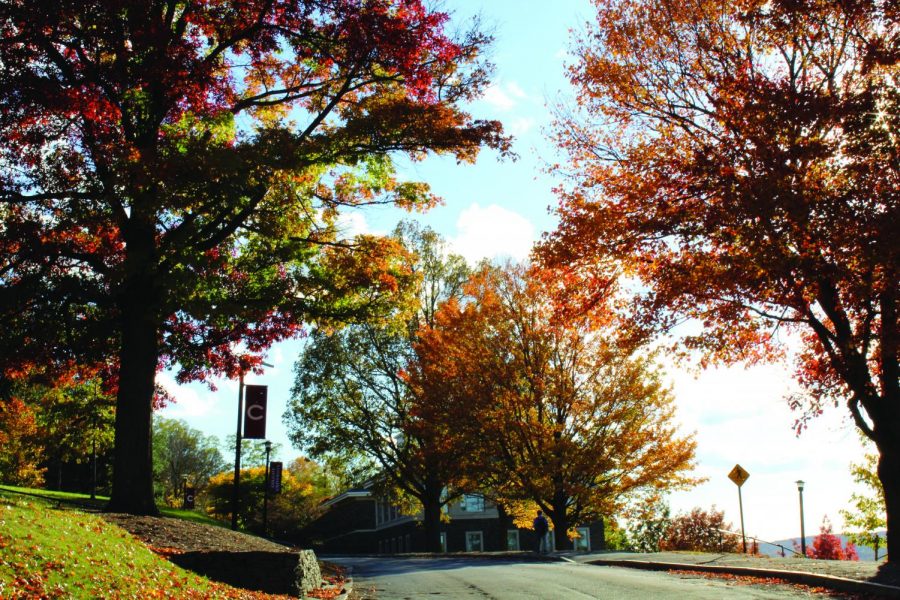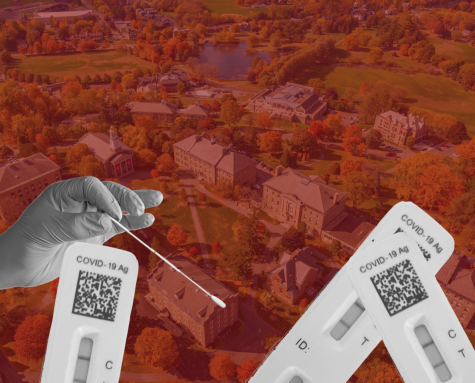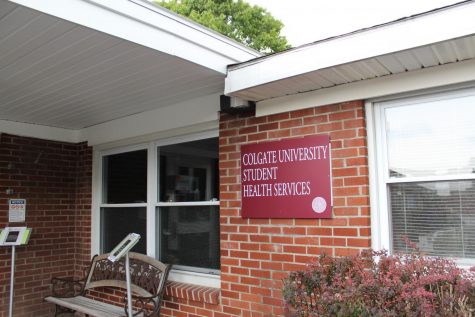Administration Updates Plans for Spring Return
The University released its updated plans for a return to campus for the Spring 2021 semester on Friday, Oct. 22, which includes a continuation of the option for students to return to campus or to study remotely. Similarly to the Fall 2020 semester, this plan includes a universal quarantine and gradual reopening. However, there are many changes made by both the Task Force on the Reopening of the Colgate Campus and the Task Force on Remote Learning to address some of the issues faced during the fall. From the Task Force on the Reopening of the Colgate Campus, changes include modifications to the Universal Quarantine including students’ ability to pick up meals and retrieve packages, exploration of new testing that will increase the percentage of community members tested and mid-week mini-breaks to address student mental and physical health. From the Task Force on Remote Learning, changes include addressing Zoom accessibility with new software, an expansion of the Classroom Technology Partners Program to increase faculty technology support and increased attention to inequitable access to technology.
President Brian Casey presented these concrete changes in an email to the community on Friday, Oct. 30, along with further possible changes that both task forces will consider in the coming months. Major possible adjustments include a return to competition for Division 1 athletic teams, possible expansion of hours of Trudy Fitness Center and Case Library and Geyer Center for Information Technology and adding new locations for student organizations and clubs to meet.
“We look forward to summarizing the semester once it is concluded but wanted to provide this update now so you knew about its work as it relates to the spring semester 2021,” Casey wrote in the email.
Associate Professor of Biology and co-chair of the Task Force on the Reopening of the Colgate Campus Geoffrey Holm explained that the Spring 2021 semester will have a different set of challenges as compared to the fall. He explained that he believes the first thing on everyone’s mind will be the change in weather.
“It will necessitate more indoor time, which poses greater risk for transmission,” Holm said. “In some ways, though, the weather is actually working with us, because it should be improving as we proceed into Gates that allow for greater student interaction and [allow] for more outside activity, in ways that the weather is working against us now. Nevertheless, Central New York winters are long, so we will have to be very careful with the amount of indoor interactions that need to occur next semester.”
Casey explained that the initial quarantine dictated how the fall semester proceeded and will be crucial for a successful Spring 2021 semester. However, some modifications will be necessary, particularly involving food delivery and waste.
“I do think there needs to be modifications, particularly around food, [for] two reasons: the logistics of delivering food and second, the food waste. That was not terrific, so the idea that people can go [and] regionally pick up food that makes sense for themselves… It really would have to be, you can grab and go,” Casey said. “I want a lot less packaging; the single-use plastics is something we have to avoid… It’s the intersection between safety, delivering food that no one’s touched and the environment. The idea that health and the environment are now in conflict with each other is very painful to all of us. It’s awful.”
During the initial quarantine upon arrival to campus, students will be able to pick up food from the dining halls, retrieve their own packages, have longer outdoor periods and exercise in select indoor locations to accommodate for the winter weather. Holm also explained that the Task Force is currently evaluating additional options for testing strategies in the spring.
“The core framework — with a pre-arrival test and then universal quarantine with two additional tests — will remain the same, and we think that this strategy has been key to get us to where we are currently,” Holm said. “We also are adamant about the need for asymptomatic surveillance testing. The outstanding question is how much we could potentially expand our capacity, in terms of the logistics of testing larger numbers of people more frequently, while also not being fiscally irresponsible.”
Casey said that when the plan reached his desk for approval, changes to testing factored into his decision for another full return this Spring.
“The cost of testing looks like it’s coming down radically, and then there’s new ways to do testing, so that question is not resolved. Those were the two things that I was most focused on [when reviewing the Spring Reopening plan]. I still think they have to play themselves out because every day is a year now. February 1, it’ll be a different country,” Casey said.
Senior Lauryn Poyser, who chose to study remotely this fall, has decided to return for the spring semester. She explained that her course load was entirely remote in the fall, a key factor in her decision to remain in her home city of Chicago, IL. Although she said she enjoyed being at home and in an urban place, she hopes for a successful spring term as her last semester at Colgate.
“I was always going to come back in the spring. I’m a senior and it’s going to be my last semester of college and I have a lease downtown, so all of that has made me more excited to come back in the spring,” Poyser said. “Also, it was great to see how the fall was handled and I think the administration has been super transparent most of the time about their decisions around the Gates. I saw that in this proposal for the spring they made collecting packages easier and dining services easier, and so I think a lot of the kinks of the fall have been worked out for the spring. It makes me more confident to come back.”
Sophomore Hailey Kim from South Korea is also studying remotely this fall and is now contemplating the decision to return in the spring.
“This semester has been really tough for me. I had to do all classes asynchronous due to a massive time difference, and I’m thankful to the professors for allowing such convenience, but it was a very lonely process. I had almost no peers to do the homework with, I didn’t know where I stood in the class, and I could not participate in class-wide discussions,” Kim said.
As an international student, Kim faces unique challenges in her decision to return to campus this spring.
“[The challenges of studying remotely] made me want to return to campus in Spring. However, I have to weigh the pros and cons once again. The traveling, the modified universal quarantine, being at a place where I am distant from my family does not seem so ideal. The risk that I am taking does not seem worth the payment either. Especially, without any breaks (such as spring break) in between the semester, I’m not sure how I will endure the studying isolated in my room, scared to go out with [COVID-19] around,” Kim said.
The elimination of Fall Break was problematic for many students, including Kim, and contributed to unusual amounts of academic stress.
“If one thing could change, I would want a break in between the semester more than anything. Even now I am struggling and looking forward to the one and only break — Thanksgiving — but without any, I’m not sure how I will manage my stress and workload. All in all, as an international student, it is extremely unclear to me how things would work out, but I am hoping I could go back to campus with small breaks in between and levy some of my stress, or stay at home safely just like this semester if the government would allow so,” Kim said.
Holm explained that the Task Force is continuing to evaluate all options and carefully plans decisions with all of the new information each day as the pandemic continues.
“We have so appreciated all of the feedback we have received from the community, and want people to know that we are listening. If you feel like we have not taken your suggestion, it is not because we haven’t heard you, but that we have to carefully weigh each suggestion across a huge number of different variables, and sometimes we just can’t accommodate everyone,” Holm said.











